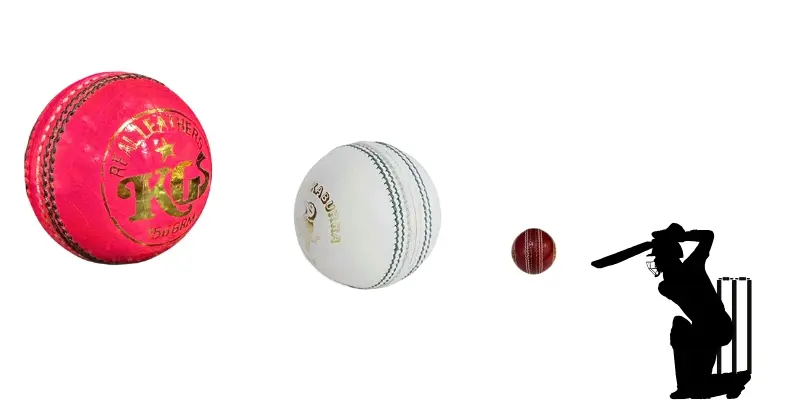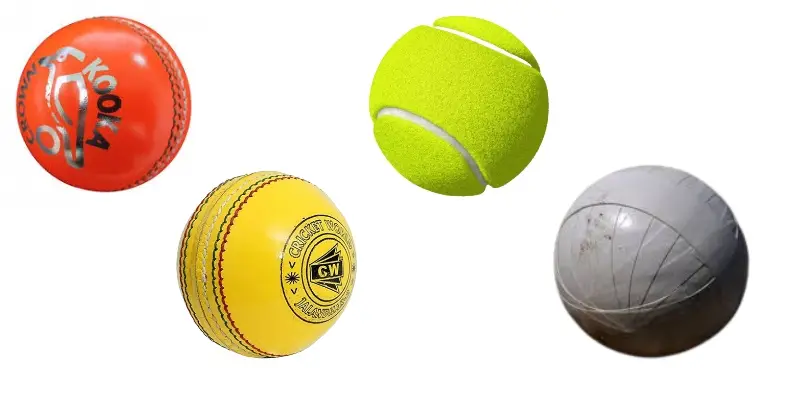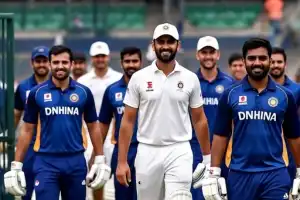From Test Matches to Street Games | Exploring Types Of Cricket Balls
Published: 12 Jan 2025
Cricket is played worldwide, and different types of balls are designed for specific formats and conditions. The color and type of the ball impact how the game unfolds. From international matches to casual street cricket, the material and the type of the ball makes all the difference. Let’s dive into the variety of cricket balls and their unique roles.

Types of Balls Used in International Cricket
Red Cricket Balls
Where Used: Red balls are the traditional choice for Test matches and first-class games, where matches last up to five days.
Material: Crafted from hand-stitched leather, red balls have a highly polished finish to maintain durability over long periods.
How It Plays: Known for their ability to swing and seam in favorable conditions, red balls challenge batsmen throughout the game.
Fun Fact: A standard red cricket ball weighs around 156 grams (5.5 ounces) and can be used for up to 80 overs before being replaced.
White Cricket Balls
When Started: In 1977, Australian businessman Kerry Packer introduced World Series Cricket, featuring matches played under floodlights and was played with white balls. While Internationally It was introduced in the World Cup 1992.
Where Used: White balls are used in limited-overs matches such as One-Day Internationals (ODIs) and T20 games.
Why White: Introduced in the 1970s, white balls offer better visibility under stadium lights during night games.
How It Plays: These balls swing less compared to red balls but lose their shine quickly. They are known to soften after about 25 overs, affecting the bowler’s grip and control.
Fact: In modern ODIs, two white balls are used (one from each end) to maintain consistent visibility throughout the 50 overs.
Pink Cricket Balls
When Started: The pink ball was first introduced in international cricket during a Test match between Australia and New Zealand in November 2015 at the Adelaide Oval. This was the first-ever day-night Test match.
Where Used: Pink balls are designed for day-night Test matches.
Why Pink: Chosen for better visibility under changing light conditions, pink balls are easier to spot than red balls during night sessions.
How It Plays: The pink ball retains its shine and hardness longer than white balls, offering bowlers more control for extended periods.
Unique Stat: The first-ever pink ball Test match was played between Australia and New Zealand in 2015 at the Adelaide Oval.
Balls Used in Other Levels of Cricket

Orange Cricket Balls
Where Used: Orange balls are sometimes used in local matches and training sessions.
Why Orange: The bright color provides excellent visibility in low-light or overcast conditions.
Special Use: Not commonly used in official cricket formats but helpful for coaching and practice drills.
Yellow Cricket Balls
Where Used: Primarily used in indoor cricket games.
Why Yellow: The vivid yellow color makes the ball easy to track under artificial lighting.
Special Feature: These balls are often made of softer materials for safer play indoors.
Rubber and Tape Tennis Cricket Balls
Where Used: Popular in street cricket and informal games worldwide.
Why: They are affordable, durable, and safer for casual play.
Fun Twist: In many countries, a tennis ball wrapped in electrical tape is a common alternative to mimic the bounce and movement of a leather cricket ball.
Interesting Facts About Cricket Balls
- The seam of a cricket ball has 216 stitches, hand-stitched to provide grip and control for bowlers.
- The fastest ball ever recorded in cricket was bowled by Shoaib Akhtar at 161.3 km/h (100.23 mph) in 2003.
- A well-maintained red ball can swing more in humid conditions due to the moisture in the air.
Why So Many Types?
Each ball type meets the specific needs of the format being played. Red, white, and pink balls dominate international cricket, while colorful or rubber balls add fun and accessibility to informal matches. Understanding the role of these balls can give you deeper insight into cricket—and perhaps even improve your own game!

- Be Respectful
- Stay Relevant
- Stay Positive
- True Feedback
- Encourage Discussion
- Avoid Spamming
- No Fake News
- Don't Copy-Paste
- No Personal Attacks

- Be Respectful
- Stay Relevant
- Stay Positive
- True Feedback
- Encourage Discussion
- Avoid Spamming
- No Fake News
- Don't Copy-Paste
- No Personal Attacks





